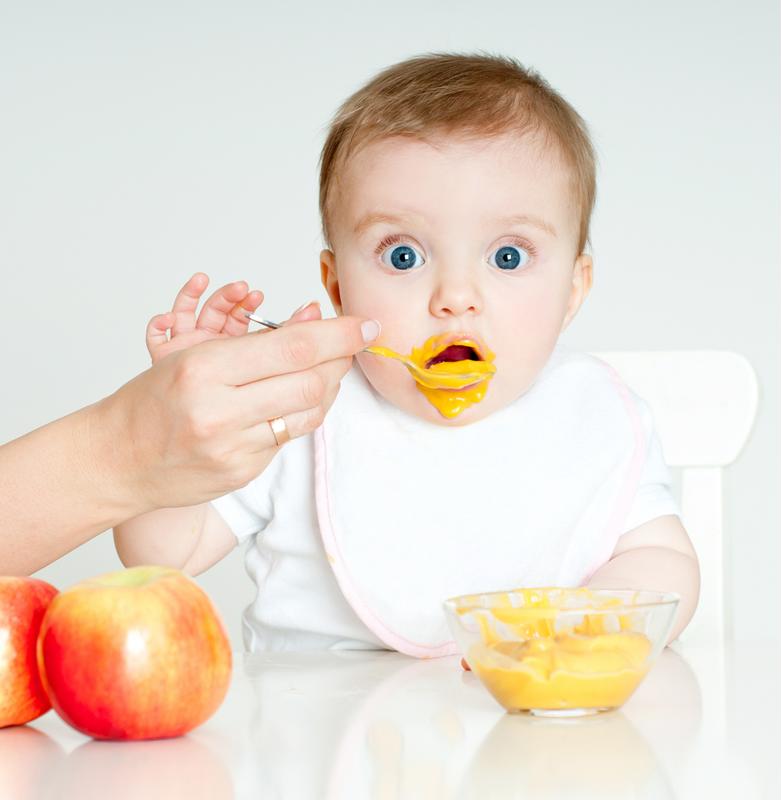You notice your baby is starting to get fussy with every gulp of formula or breast milk. Perhaps it’s time to start implementing solids into your little one’s diet. The American Academy of Pediatrics recommends parents introduce solids foods no earlier than 4 to 6 months of age. If your little one falls within this age group, he or she is ready for life beyond the bottle.
When, what and how to start your baby on solid foods, and which meals are best for the transition:
When to start
We know what you’re thinking: How do I know for sure that my baby is ready to start eating solid foods? Besides the recommended age group, there are additional signs that indicate your baby is advancing to the next step in the food department. If you notice that your child isn’t sleeping through the night, is able to stay awake later than normal or is generally just eating more, chances are he or she needs more nutrition in the daily diet. The 3-4 month age range is an optimal time for growth spurts to occur so it is natural that your little sugar plum is craving extra energy.
Foods to start with
Your baby’s teeth haven’t fully grown in yet, so avoid hard foods like cereal and crackers. Instead, start with softer foods like a banana, pear, potato or an avocado. At this point, you have no idea what your baby’s taste buds prefer or if they have any allergies, so take it slow. Test out one food at a time and wait about two or three days before introducing another one. This allows to you watch for any allergic reactions like diarrhea, vomiting or skin rashes. If any of these occur, stop feeding your child that food and immediately contact your pediatrician.
After a few months of starting your baby on solids, the AAP recommends that you test out a variety of foods such as meat, cereal, vegetables, fruit, eggs and fish. Again, stick with the two to three day waiting rule and note any negative reactions.

How to feed your baby
Your baby is used to eating out of a bottle, and, you’re used to feeding him or her from one – especially while they’re cradled in your arms. It is important that you place your little boy or girl in a high chair to prevent from choking when starting solid foods. His or her head must be in an upright position at all times. Additionally, it is recommended that you use the appropriate eating utensils – this excludes your everyday silverware. You should use a tiny spoon coated with a soft, silicone material that provides protection for your baby’s tender and sensitive gums.
Babies should have the opportunity to explore the food they are about to try and familiarize themselves with the new texture. For this, place a bit of the food on the tray table and let your child play around a bit. Get ready for a mess, parents! But what a cute mess it will be - don’t forget to charge the video camera.
After your baby is done making a mess and exploring his or her scenes, it’s time for the first bite. You can do this one of two ways: place a dab on the lips or gather up a spoonful of food and airplane it into his or her mouth. If this is the first time your baby is trying a particular food, start with putting a bit on his or her lips. This will allow you to see how your child reacts to it. If it’s positive, go ahead and feed your baby a spoonful of his or her new favorite food. Remember, these are all new flavors don’t be surprised if your baby spits it out at first – it’s only natural. Instead of giving up, carefully try it again. If he or she has the same reaction, give it up for now and try that food again another day.
Feeding time is key, especially when trying something different. It is best to implement new foods when your baby is wide-awake and feeling happy.
